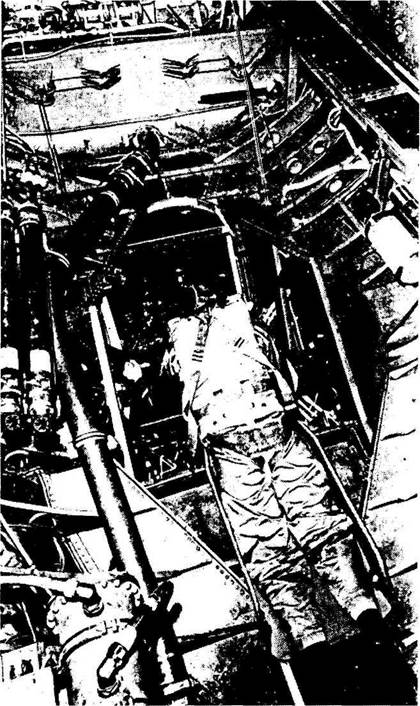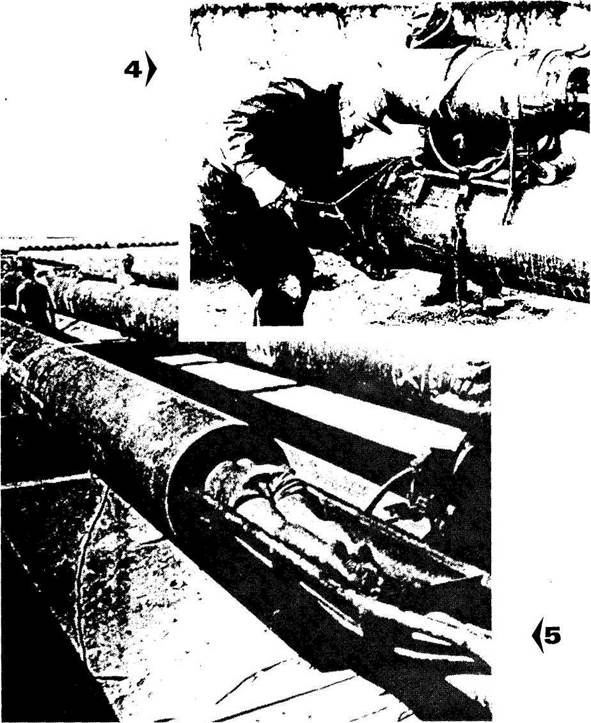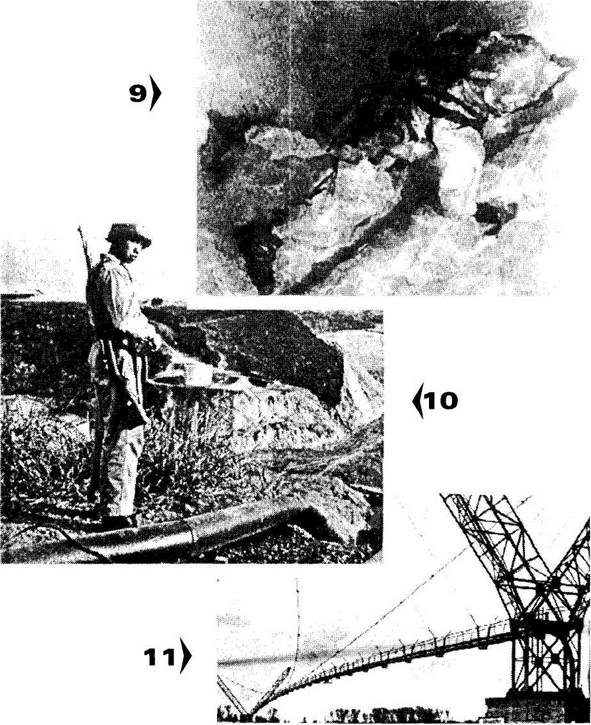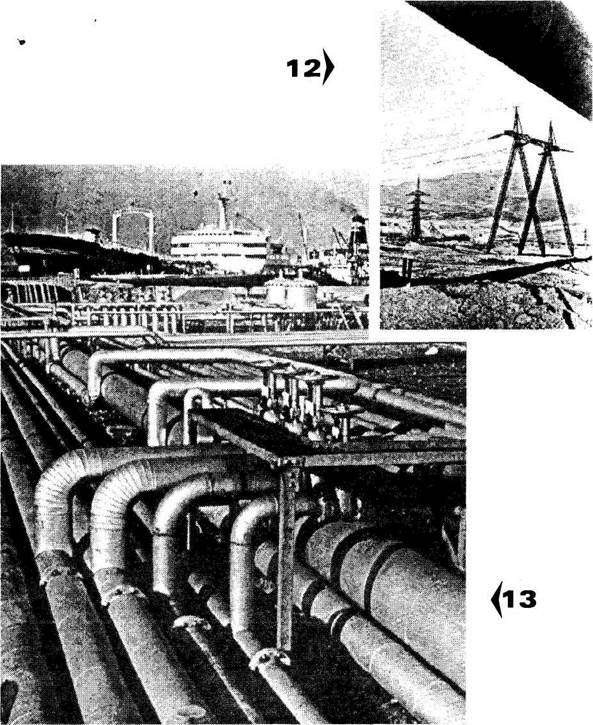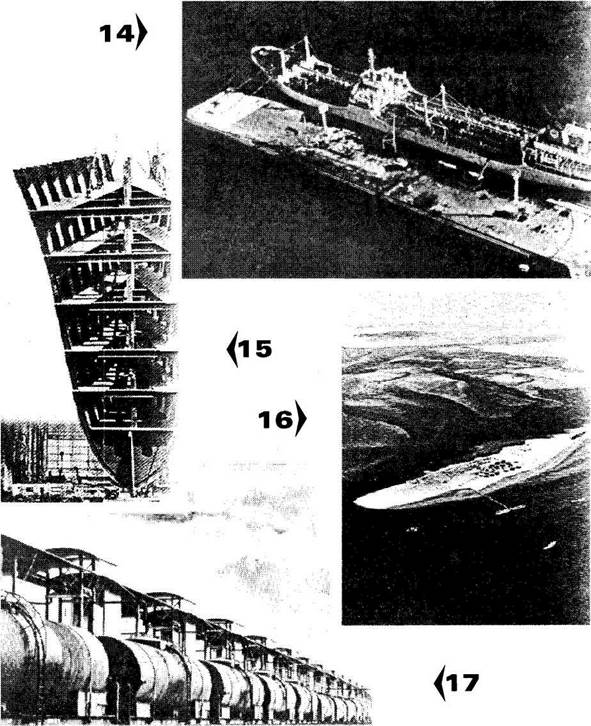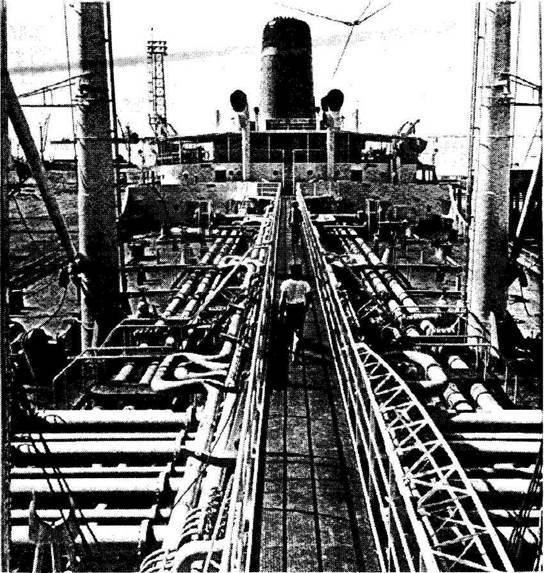Selection three
Here are several pictures depicting different means of oil and gas transportation in various countries. Look at them carefully. Then read the descriptions to all of them which are given in the random order. Match the descriptions and the pictures. Be ready to speak to a class what each of the pictures tells you about. a. The boom on an aerial tanker is operated by a boom operator b. Perhaps, the most exciting transfer of oil is the loading of a plane in c. Many products can be sent through a pipeline at the same time, one d. The machine on top of this pipe is an enormous X-ray machine. It e. This man who looks as if he might be taking a sunbath with his f. This pipeline crosses miles and miles of salt marshland. g. Pipelines cross all kinds of territory. This one will travel underwater h. In Colombia, S.A., a pipeline runs right through a village. In its journey it climbs mountain ranges, goes through rivers and wanders along through the streets of remote villages. i. A diver is inspecting an underwater pipe. Underwater pipes, like pipes on the surface, have to be watched, cleaned out, and repaired. On land the inspection of surface pipes is sometimes done by using low-flying planes, but underwater every inch must be gone over by a diver. Tranportation and Storage 115 j. This raised pipeline carries gas across mountainous parts of Ukraine. k. A butterfly bridge carries a natural-gas pipe across the Danube River, near Vienna, Austria. I. This guard watches over a pipeline in Colombia, S.A.Pipelines need to be checked for damage, and cleaned out from time to time. To clear a pipe and clean it a small machine of rollers and steel springs called a go-devil is put into the pipe and blown through it. m. These pipelines have reached their destination. This one happens to be at the wharfs of Yokkaichi City, Japan. Shipping crude oil and refinery products throughout the world is a major undertaking. Oil is carried by special ships, called tankers. n. A tanker's hull is especially designed to carry oil in bulk. It is divided into compartments to cut down on the movement of the cargo in high seas, and to enable the ship to carry different grades of crude oil on the same voyage. o. Tankers are unlike any other kind of ships. They are long and low with flat decks covered with patterns of pipes, valves and catwalks. The bridge is almost midship and the smoke-stack is near the stern. p. Constant watch must be kept on temperature of the oil, and the ship must also be kept clear by heavy fumes. Fast turn-abouts at the ports are important, for time is always money to the oilmen. In port, the oil is discharged and loaded by powerful pumps. Tanker living is considered among the best and most comfortable at sea. Since tankers are actively at sea more than other ships, quarters and food are good and recreation sometimes includes a swimming pool on board. q. This is a marine terminal located on a strip of sand that reaches far into the Persian Gulf. The pier is far enough offshore to allow the largest oil tankers deep enough water to dock there. From this pier, almost all the oil shipped out of Arabia is loaded into ships. r. Transportation by land is done by railway cars like these in Holland. s. The last few miles of oil's journey is often by truck to homes or places of business. Here, off the coast of Jutland, Denmark, a truck crosses to the Island of Mano. t. Not all oil is delivered by tanks or trucks; some is sold by the barrel. Here, in Java, barrels are being labeled. Chapter Five
Tranportation and Storage
Chapter Five
Tranportation and Storage
Chapter Five
Tranportation and Storage
Chapter Five
Tranportation and Storage
Chapter Five
2O>; Tranportation and Storage
|

 Stories in Pictures
Stories in Pictures